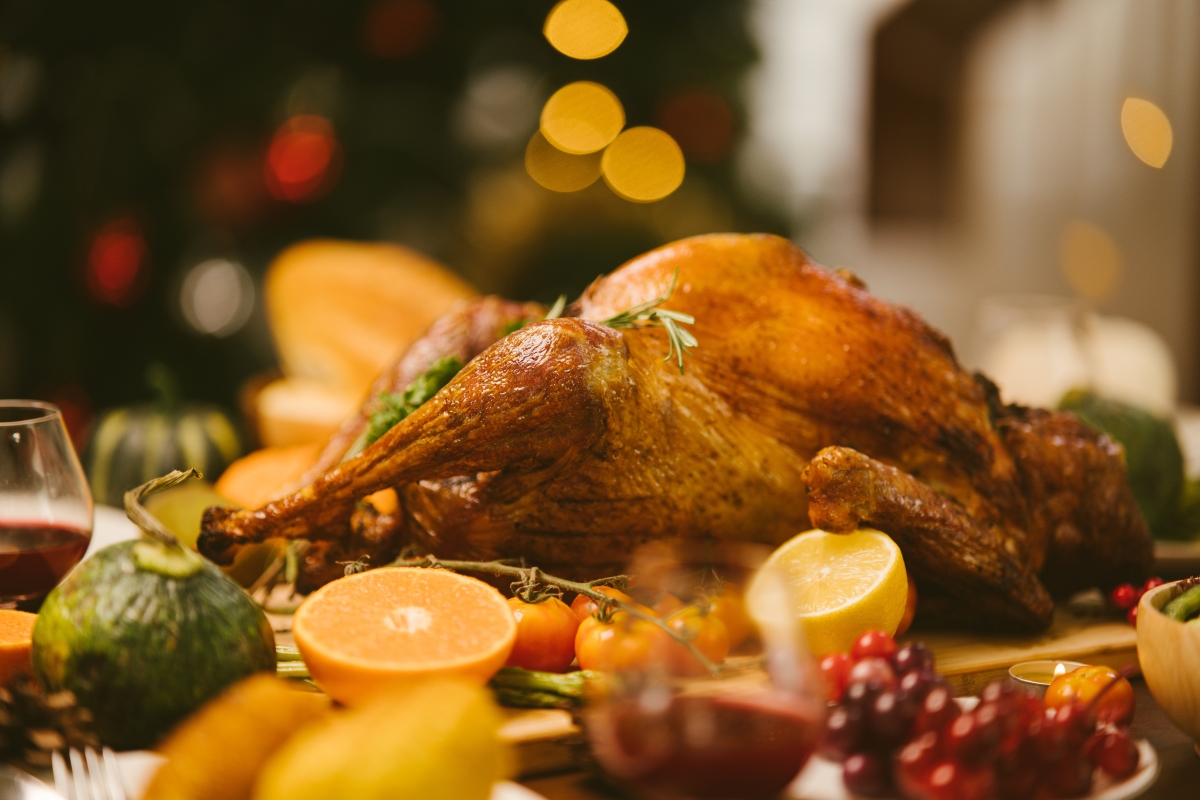
A tasty turkey is irresistible, particularly during a thanksgiving ceremony. Do not get surprised if your guests gobble up that delicacy within minutes. As a classy and modern host, you do not want to starve your guests or disappoint them by cooking flavorless meat. To ensure everyone gets enough, you should approximate six pounds for every four guests.
Fire & Flavor All Natural Turkey Perfect Herb
Brine Kit, Perfect for Roasting, Grilling, Smoking, Frying, 16.6oz View DealTurkey Seasoning Tips
Whether it’s a thanksgiving turkey or for your own consumption, you have to be careful how you thaw, brine, and stuff it. It doesn’t matter whether you are doing it for your umpteenth time or for your first time. Here are various fundamental tips that will help you season your turkey like an expert:
Read More »• Steam your turkey. You know the kind of turkey that would leave your guests licking fingers is the one with extra moisture. To achieve the extra moisture, steam the bird but ensure the skin does not burn. To take the flavor to a higher level, add some natural herbs like rosemary, sage, ginger, and garlic.
• Stuff it with more fresh herbs. Adding more herbs at this stage will also be brilliant, and do not forget an apple. If you want the aroma from your oven to invite people from across the city, add paprika, ground coriander, and fenugreek.
• Brine it for no less than 12 hours. Brining ensures more flavored and juicer meat. To enhance the taste and achieve a crunchy skin, rub fresh herbs and about two tablespoons all over your bird, place it in a plastic bag, and refrigerate it. You can leave the meat to marinate for as long as you wish, even two days.
• Go ahead and spread flavors everywhere. Although sprinkling salt is okay, you may consider slathering a mixture of flavors all over the bird, including the under the skin. You could use different seasonings like chopped parsley, lemon zest, and sage to make butter. The mixture should make the meat even juicier.
• Now polish that meat! Glazes are excellent in giving your meat a shiny finish. In this case, you can use maple juice and fresh sage to brush the bird before roasting it. You should play around with your bird before placing it in the oven, but ensure you secure the ends with toothpicks to prevent curling.
• Get your garnishes ready. You could use any complementary flavors to garnish your turkey. Whatever you choose, ensure your plate looks the prettiest and also nutritious. You can use anything you wish, depending on the results you want to achieve. For instance, coriander leaves, grapes, and roasted pears would be a brilliant way of complementing your savory meat.
• Serve with a sauce. Whichever way you decide to slice your turkey, forget not to make thick sauces. You could use fruits like raspberries to make delicious toppers.
Additional Tips That Will Help You Flavor It Like a Pro
It is advisable to familiarize yourself with the safe handling of poultry. When slathering your turkey with seasoning, ensure you clean the utensils you place the bird on, but do not rinse the bird. Also, after thawing, you should begin working on the meat immediately. Leaving the bird to stay too long may attract bacteria, which can breed on the meat pretty fast. Here are guidelines that will help you speed up the preparation:
• Buy a free-range turkey. Most people believe that free-range turkeys are tastier because of their exposure to the outdoors. If you can get one that is also organic, it would be better as such birds roam freely and do not feed on chemicals. Before you rush to pay for that attractive turkey that meets your weight requirements, pause some more and ask for an organic bird. It is always easy to visit the store with details of what you want because you will not waste time at the store.
• Obtain your bird in advance. If it’s just about Thanksgiving, you better acquire your turkey early because the stores can flock excessively. Waiting until the last minute could give you a rude shock; you may find yourself scrambling for the last piece. It may create unnecessary tension when you miss the turkey of your choice, and the guests are just about to start arriving.
• Have adequate space in your fridge. Brining will require you to leave the bird inside a bucket full of brine. Prepare your bucket and organize some room where the bucket will fit. Also, have some paper towels ready, which you will use to pat your turkey dry after brining. Clearing brine from your sink will like spread turkey bacteria all over your kitchen counters.
• Have all your ingredients ready when cooking. Early preparation is vital for speedy turkey seasoning. You do not want to keep going to the store to acquire this or the other spice. You may also want to know whether you will be hosting guests on a special diet. Although it is rare to find people reacting to fresh herbs, it doesn’t hurt to know in advance.
Most Ideal Herbs for Turkey Seasoning
Your spice rack might be full of flavoring herbs already. However, you may not need to use all of them on your turkey. Here are some ingredients you can use, although there is no limit to how far you can go as long as you use natural herbs:
• Sage – when used in plenty, sage gets rid of the sourness in turkey meat, making it more delicious. For food safety purposes, you should bake in a casserole and not inside the bird. Ensure that it cooks thoroughly because you will also rub other herbs like thyme, rosemary, and oregano on the meat. Use as much sage as you want; your guests will be coming for a second and third helping.
• Dry rubs – powdered herbs are pretty useful in turkey seasoning. They are effective in sweetening the turkey and eliminating its bland taste. It would be best if you ground dry herb leaves instead of buying ground herbs from the stores. Home-produced powders are fresh, and you will be sure there are no additives. Because of the freshness, freshly ground spices tend to have a more pungent aroma.
• Oregano – oregano closely relates to mint and has effective antibacterial uses. When used in turkey seasoning, it provides a light-yellow savory aroma that leaves your meat well spiced.
• Fresh beer – you can use fresh beer for basting or substitute it with fresh juice. The natural sugars in beer ensure your meat gets caramelized, giving it a beautiful, crunchy skin.
• Bacon strips – bacon is irresistible, and nobody will despise a serving with it. You can use bacon in various ways, depending on your preference. You could inject or baste with bacon grease or slice some pieces such that you will be snacking on bacon as you devour your turkey.
• Lemons or oranges – citrus fruits are useful in taking your turkey aromatics notches higher. Adding half of lemon or orange adds some noticeable glow to your meat, not to mention the acidity, which gives the serving an alternative taste.
Preparing turkey meat can be very stressful, especially during Thanksgiving, when you have pressure to impress guests. Overcooking or undercooking your bird will produce unpleasant results, where the meat might turn out dry and raw. Whether you choose to be fancy with your cooking or retain simplicity and palatability, the basics remain the same. The above tips should guide you through preparing a savory cut of your turkey






